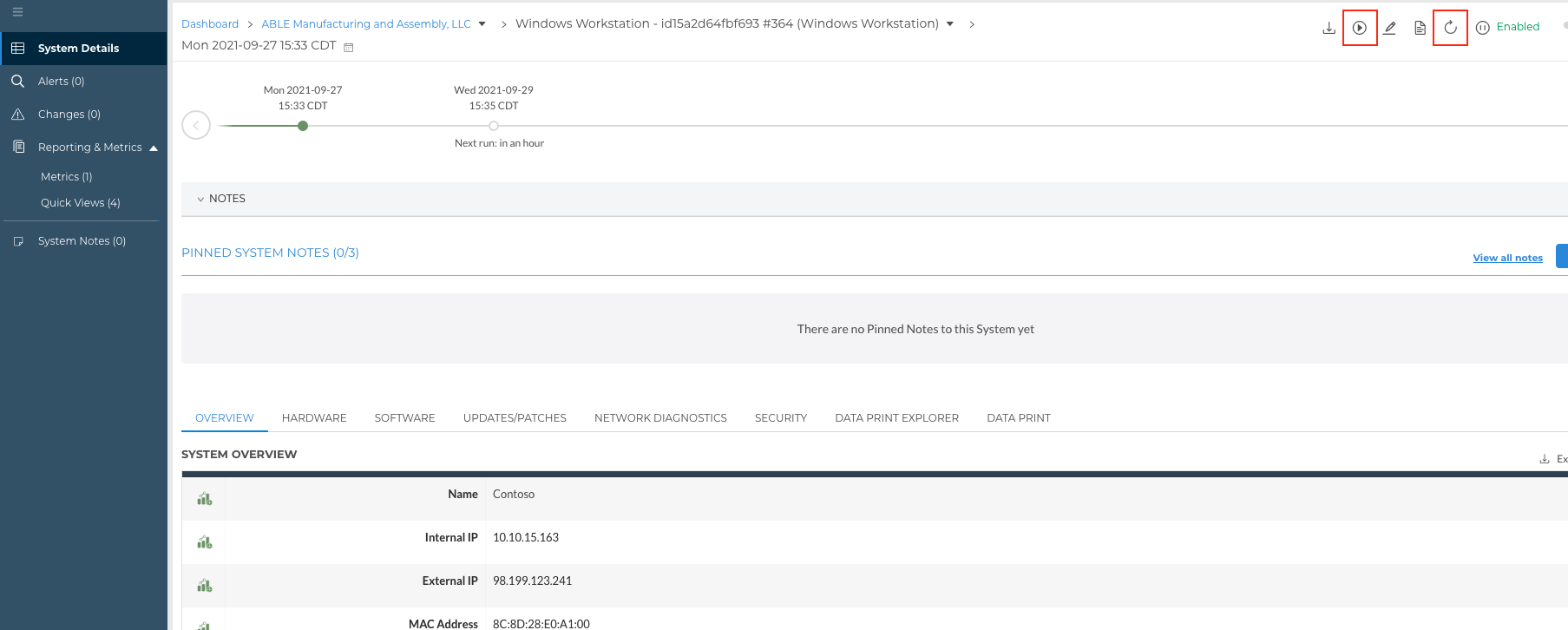Windows Workstation
This document provides the steps required to configure the Windows Workstation Inspector.
Quick DetailsRecommended Agent: Self-Managed
Supported Agents: Self-Managed
Is Auto-Discovered By: Endpoint Agent Installation
Can Auto-Discover: N/A
Parent/Child Type Inspector: No
Inspection via: Endpoint Agent
Data Summary: Here
Overview
System RequirementsThe Windows Workstation Inspector requires Windows 10 (any version) or higher.
Endpoint Inspector CountThe Windows Workstation Inspector is an Endpoint Inspector. Endpoint Inspectors are billed per unit according to your agreement with Liongard. Usage beyond the contracted amount will be charged on your monthly invoices.
To view your Endpoint Inspector count per Environment, navigate to Admin > Environments > Review the "Endpoint Inspector" column
To view the number of included Endpoint Inspectors and your minimum commitment for Endpoint Inspectors, navigate to your username in the upper right-hand corner and select Company Settings.
Please contact your Account Manager for additional contract and pricing details.
See it in Action
Liongard Inspector Setup
Configuring Auto-Discovered Windows Workstation Inspectors
The Windows Workstation Inspector is auto-discovered upon deployment of an Endpoint Agent on a Windows workstation.
Full instructions on Endpoint Agent deployment via MSI and its minimum system requirements can be found here.
After the Endpoint Agent has been installed, the Windows Workstation Inspector will be Auto-discovered, and will need to be activated. Navigate to Total Discovered Systems on the Liongard home screen, or Admin > Discoveries.
Locate the newly discovered Windows Workstation Inspector on the Discoveries Dataview Table and verify that the correct Environment has been selected for the Inspector. Then, in the Actions column select the three dots and select Activate. Your Windows Workstation Inspector will be activated and the initial inspection will automatically be launched in about a minute.
This Inspector was custom built to take advantage of least privileged best practices. The Endpoint Agent can be deployed using any standard user-level account, whether it be a local account on the system or a domain user account.
Endpoint Inspector Auto-activation
If you would like ALL Endpoint Inspectors to auto-activate after Auto-discovery, navigate to your Username > Company Settings and turn on the Endpoint Auto-Activation toggle as shown. After this toggle has been enabled, individual Environments can be excluded from the Endpoint auto-activation process by adding them to the list below the toggle.

Please keep in mind that Endpoint Inspectors are billed per unit, and usage beyond your minimum commitment (also found on the Company Settings screen) will incur additional costs.
Enabling auto-activation means that Endpoint Inspectors will be automatically Auto-discovered, activated, and billed accordingly.
Remote Ping and Traceroute Functions
The Windows Workstation Inspector can assist in troubleshooting network issues
by running a ping and a traceroute on the Windows workstation.
Follow the steps below to run a ping and a traceroute:
- Navigate to your Dashboard > Systems > System Type > Windows Workstation > Click into a System.
- Click the Pencil icon, in the top-right corner of the screen, to Edit the Inspector's configurations.

- In the Custom URL field, enter an IP address, or a URL, that you would like to run the ping and traceroute against.
- Click the blue Save button.

- Once saved, force run the Inspector by clicking the Run button in the top-right corner of the screen.
- Clicking the Refresh Status button will provide the status of the current run. This process should take approximately one minute to complete but can take up to 5 minutes if problems are detected.

- Once the inspection completes, the results of the ping and traceroute can be found on the Network Diagnostics Data View tab in the Ping and Traceroute tables.
Missed Inspections Due to Lack of Connectivity
If your Windows Workstation is offline and misses multiple inspections, Liongard will only process missed inspections in the last 24 hours.
Warranty Information
The Windows Workstation Inspector will surface warranty data for Dell and Lenovo workstations. Warranty information for Dell and Lenovo workstations can be found on the "Warranty" Data View tab. Every 7 days after 1st inspection date we run a lookup for warranty expiration date to see if there has been any updates.
Liongard is still working to include warranty data for other manufacturers. If the Windows Workstation Inspector runs against a machine that is not Dell or Lenovo, the Warranty Data View tab will not be visible.
Removing Windows Workstation Inspectors
To remove a Windows Workstation Inspector from Liongard, complete the following steps:
- Uninstall the Endpoint Agent
- After the Endpoint Agent is uninstalled from the target machine, log into Liongard and disable the Inspector.
Updated 3 months ago
